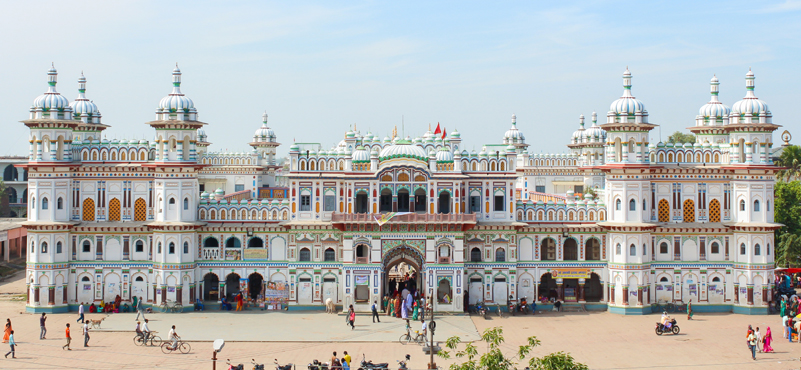Suman Billa, Joint Secretary, Ministry of Tourism, in a well-received address, asked industry to focus on filling in glaring shortages piyuson the supply-side. He also shared a number of initiatives taken by the government and MoT in creating new products, including pitching for a more relaxed CRZ guidelines which could give a fillip to coastal tourism in the country.
 Calling investment an area that remained very intrinsic to the ministry, Suman Billa said that MoT was closely looking at opportunities to increase investments. Revealing that the ministry implicitly understood that there was tremendous potential, he said “tourism is a sector that can transform nation’s economy. However, for some reason, we have not been able to unlock this potential. For long, tourism has been the elephant in the room.” Conceding that everyone realised that it had tremendous potential for opening up India’s economy in a way that was unimaginable, he stressed that tourism had the greatest potential for creating employment which was important, especially, for a country like India.
Calling investment an area that remained very intrinsic to the ministry, Suman Billa said that MoT was closely looking at opportunities to increase investments. Revealing that the ministry implicitly understood that there was tremendous potential, he said “tourism is a sector that can transform nation’s economy. However, for some reason, we have not been able to unlock this potential. For long, tourism has been the elephant in the room.” Conceding that everyone realised that it had tremendous potential for opening up India’s economy in a way that was unimaginable, he stressed that tourism had the greatest potential for creating employment which was important, especially, for a country like India.
He argued that a foray in tourism was most beneficial for least-developed regions of the country. Citing the example of Northeast and Buddhist Circuit, he said “one can realise that how areas that have missed the development bus can actually come back in a big way through tourism. Unfortunately, this area has not received the kind of attention that it ought to have been given.”
Noting that one of most stellar undertakings of the PM was to bring tourism at the centre of national mainstream agenda, he pointed towards the change in outlook, stating “It is for the first time that we are taking about tourism as a game-changer for the economy that can create jobs and that can raise the general level of living of population.”
Suman Billa rued the fact that a nation with such diverse offerings and heritage like India catered to only a dismal eight million foreign tourists. By mentioning that a city state like Dubai catered to over twelve million, he tried to put things into perspective. “I think, it is really a shame that a country of the size of India, endowed with an envious heritage and plethora of products in offering, attracts only eight million foreign visitors. That clearly tells us that we have a task cut out for us,” he said.
Further examining trends in footfall, he said that domestic numbers in 2015 stood at a staggering 1.45 billion up from 1.2 billion in 2014, which meant that a significant amount of travel was being done by a rising middle-class. “At the back of economic reforms and generation of significant amount of money and surplus by the middle-class of the country, a significant amount of travel is being undertaken. People are spending on travel and tourism – which also means that the tourism sector is under significant expansion mode,” he substantiated.
Stepping into investor’s shoes, Suman Billa picked out battling negative sentiments as a major challenge in the past two years. Attributing structural issues that India imposed upon itself for the outcome, he detailed how investments were being classified into hospitality and commercial real-estate. “It is a fact that a hotel cannot be classified under commercial real-estate because it is a long-duration project,” he argued. Adding that it typically took several years for projects to breakeven where interest ranged as high as 14 percent, and entrepreneurs were expected to pay it back, he said that it debt was a gamble taken by hospitality industry. “The general belief was that whether or not debt could be serviced through revenue streams, but the overall valuation would rise, allowing hotels enough leverage to re-capitalize debt, shoring up their returns,” Suman Billa explained.
“Unfortunately, after the boom years of 2007-08, economy did not take the trajectory industry hoped it would. There are several assets today that are debt stressed. We are exiting from the tunnel as we move ahead,” he added with a hint of optimism.
Outlining ministry’s achievement in getting the hospitality industry out of the commercial real-estate classification and into the infrastructure segment, he explained that it was still a battle half-won. “It came with a couple of riders. First, it is open only to investment of ticket-size of `200 crores or above – which means that it only involves hotels with around 200 rooms or so. It is a very large ticket size to capture,” he explained. “Also, it is not open to cities which have a population of a million or lower, meaning several of investment opportunities are likely to be bypassed. Therefore, I believe that there is a significant middle-ground that needs to be captured,” he added.
He informed that the ministry of tourism was in conversation with the ministry of finance and RBI for examining the possibility of bringing hotels with smaller inventory and investments into the bracket, with the hope of fixing the loophole. He further added that the prescription MoT was moving forward with was to bring down the threshold to fifty crores.
Taking note of India’s deficient supply side, he highlighted that India was growing at an average of 8-9 percent which to his understanding was significant. He reasoned that if India continue to grow at the same pace, the supply side needed to grow, too. “The last study undertaken by us was in 2010, and we came to a figure of 1,92,000 rooms that needed to be constructed. It is something we need to address, and that is why I say that the size of opportunity is simply tremendous,” he said.
Looking at the larger picture, he asked the industry and investors to introspect weather the nation had the collective urge to capitalize on opportunities that were going to be coming about. “Are we ready to understand that this is the beginning of a long-term cyclical growth that is going to be triggered from now? According to a study, tourism market is expected to be around 148 billion USD in value, which is likely to expand to USD 419 billion by 2022. It is a significant projection, highlighting the trajectory of growth,” stressed Suman Billa.




































